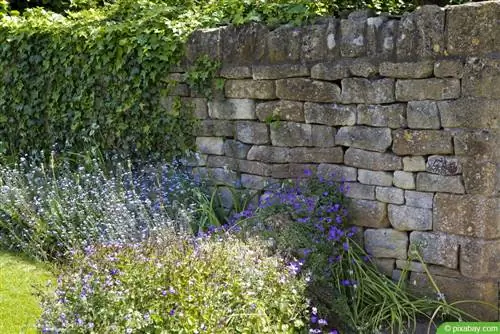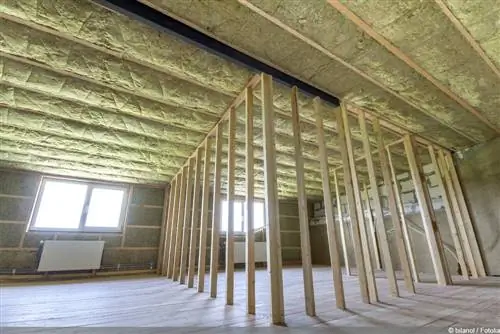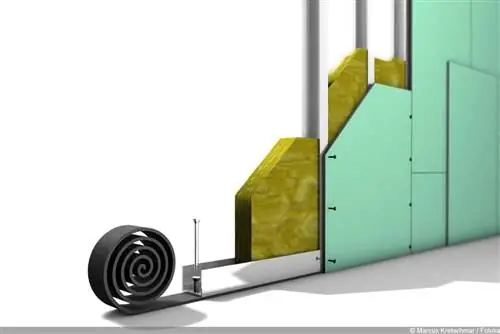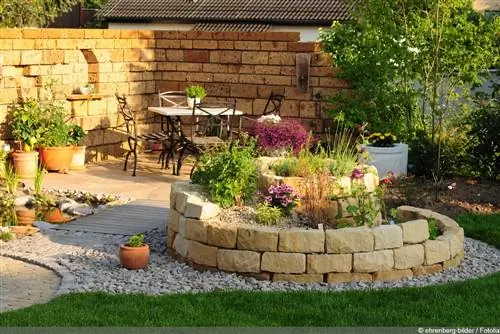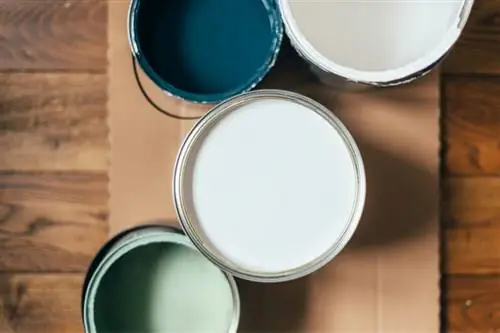- Author admin [email protected].
- Public 2023-12-17 03:39.
- Last modified 2025-01-24 12:45.
Before you add greenery to your house wall, you must plan the project well to prevent possible damage to the masonry. Certain points must be taken into account for the success of the greening.
Locate damage
One of the most important points when planning a facade greening is the localization of existing damage to the house walls.
Climbing plants in themselves do not pose a problem for the walls if they are not damaged. For this reason, facade greening is much easier to implement for a new building than for existing buildings. An old building in particular often needs to be thoroughly checked before the facade greening is implemented. Since the plants do not settle in the facade, but rather cling to it, there is no problem with house walls without damage. For this reason, pay attention to the following defects that must be corrected before implementing the project:
- severe weathering
- Cracks
- leaking joints
- crumbling plaster
- permanently damp spots
Note:
You need to be particularly careful with facades that have not been properly renovated. In such a case, the plants quickly find a crack that can lead to further damage.
Determine paint finish
A dense plaster does not pose a problem for any of the suitable climbing plants. However, there can be a problem if you use a paint that is unsuitable for greenery on plastered walls. In particular, plastic-based paints such as plastic dispersions should be mentioned here. In comparison to other products such as lime paints, when using plastic dispersions, bubbles can form between the plaster and the paint. These store moisture, which is the perfect entry point for adhesive roots. For this reason, you should either avoid greening or use a climbing aid, as this is not directly against the house wall.
Select suitable plants
In order to prevent possible damage without major effort, you can alternatively rely on suitable plants. Classic self-climbers such as ivy (Hedera helix), the evergreen creeping spindle (Euonymus fortunei var. radicans) or climbing hydrangea (Hydrangea petiolaris) are certainly among the most popular species for facade greening, but these pose a danger to already damaged facades due to their adhesive roots. If the damage cannot be repaired, you should use other methods.
Trailers and petiole tendrils
Petal vines, which are mainly found in Central Europe as clematis (clematis), are completely harmless. Individual shoots wind upwards around rods or ropes of the trellis and thus hold the plant in place. They do not seek support on the house wall, which means no damage is caused. The tendrils grow in a similar way. They have tendrils that feel their way forward and choose a good spot on the trellis in order to get as high as possible. They are also not known for damage to facades.
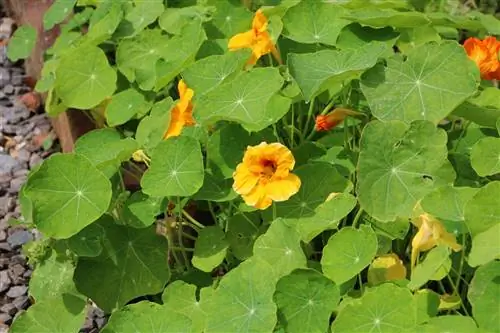
These include the following species:
- Scented sweet pea (Lathyrus odoratus)
- True grapevine (Vitis vinifera)
- Common maiden vine (Parthenocissus vitacea)
- Bell vine (Cobaea scandens)
- Nasturtium (Tropaeolum)
- Wild grapevine (Vitis vinifera subsp. sylvestris)
Spreading climber as facade greening
Spread clips are next in line. Their shoots simply get caught in the climbing aid and do not cause any damage. Because of their growth, they can be easily cut into desired shapes. The best-known examples are:
- Blackberries (Rubus sect. Rubus)
- Fire thorns (Pyracantha)
- Climbing roses (pink types)
- Winter jasmine (Jasminum nudiflorum)
Suitable climbing plants
Climbing plants don't really damage the facade, but they do damage the climbing aids themselves or components such as poles and pipes on the facade. Heavy swaying in particular can become a problem as it can also cause damage to the house wall. These include numerous plants that are very popular as greenery:
- Akebia (Akebia quinata)
- Tree shrike (Celastrus orbiculatus): Strong creeper
- Wisteria (Wisteria sinensis): Strong creeper
- Honeysuckles (Lonicera)
- Hops (Humulus lupulus)
- Kiwi (Actinidia)
- Whistleweed (Aristolochia macrophylla)
- Glitterweed (Fallopia baldschuanica): Strong creeper
Use climbing aids
Depending on the plant selection and type of facade, you may have to use a climbing aid. The big advantage of them is the high level of protection against possible damage, as the plants do not grow directly up the wall of the house. The only “damage” caused by using a climbing aid is to the fastenings on the facade. Climbing plants can become quite heavy and without good attachment they will tip over, causing major damage after planting. If you choose a self-climber, you do not need any climbing aid unless the surface is not suitable for the plants.
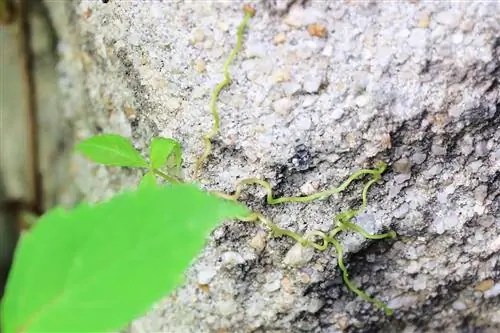
For the other types, you should use one of the following climbing aids:
- Leaf stem trellis: Trellis ropes (running horizontally and vertically)
- Anchor: thin trellis (horizontal, vertical, diagonal)
- Climbing plants: Trellis, pergola (attached to house wall)
- Spreadclimbing: Trellis, rope systems (running horizontally)
Note:
If you want to attach climbing plants such as wisteria to the wall via a trellis, you must protect the downpipes. Otherwise the shoots will wrap around the pipes and literally “strangle” them, causing them to be severely damaged.
Problematic facades?
Climbing aids are needed not only if you are not planting root climbers, but if the building does not offer a classic surface to hold on to. There are a variety of specific types of facades that, due to their nature, do not even have to be afraid of ivy or trumpet flowers (Campsis). If you still want to plant a self-climber, the following types of facade are suitable if you provide a suitable climbing aid as for the other plants:
- ventilated facade (VHF)
- Facade (thermally insulated)
- clad with wood
- clad with trapezoidal sheet metal walls
- large windows (not a complete window front)
Observe regular cutting measures
So that the climbing plants do not become a nuisance, you should not neglect the pruning measures. This primarily means topiaries that keep the climbing plants in check. Regular cutting measures are necessary, especially in the following cases:
- Plants grow too tall
- growing under gutters or roof tiles
- block windows and doors
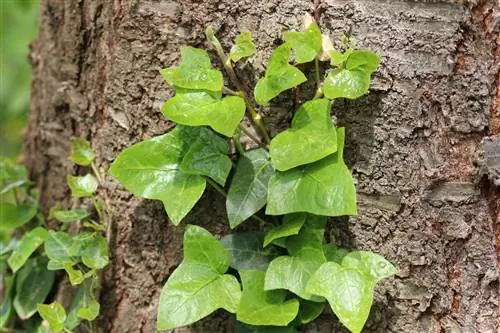
Without pruning measures, the possibility of further damage caused by the plants being too tall increases. For this reason, check at regular intervals whether a cut is necessary.
It can help if you plant slow growing species. This significantly reduces the cutting effort. These include:
- Evergreen creeping spindle
- Climbing hydrangea
- Vetch (Vicia)
Note:
Don't forget the general care required for the climbing plants. It is particularly important to check the climbing aids and whether dead shoots or leaves need to be removed.


